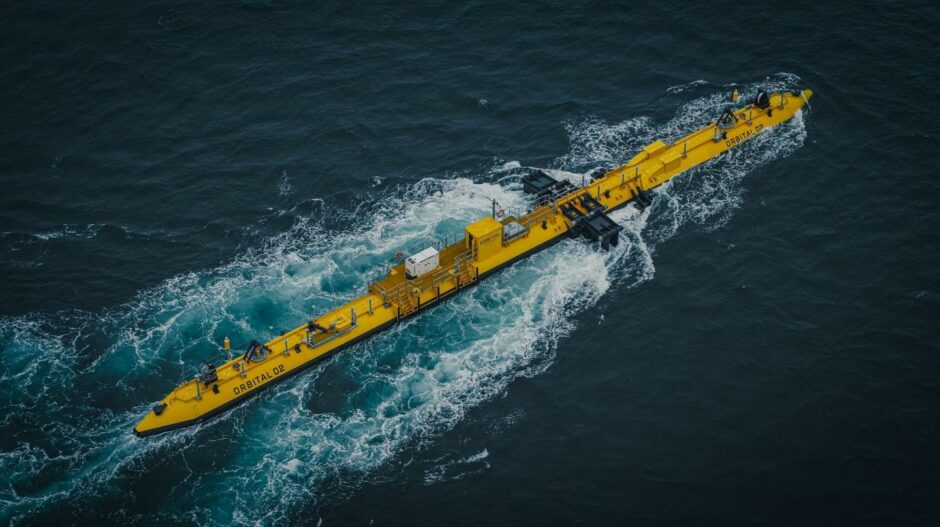
The UK Government has said it will increase the frequency of its renewable capacity auctions from biennial to yearly, in a bid to boost investment and jobs.
The Department for Business, Energy and Industrial Strategy (BEIS) said Wednesday that the change to its flagship Contract for Difference (CfD) scheme would begin from March 2023, when the next CfD round opens.
CfDs are the government’s primary method of encouraging renewables development, incentivising investment by giving developers of projects with high upfront costs and long project lifetimes protection from volatile energy prices.
CfDs are typically 15-year private law contracts between electricity generators and the Low Carbon Contracts Company (LCCC), a government-owned entity that manages the contracts at arm’s length from government.
The auction scheme, which replaced the Renewable Obligation, has helped bring down the per unit price of offshore wind by around 65% since the first auctions were held, the government says, while helping the UK establish itself as one of the world’s largest generators of wind power.
The fourth allocation round (AR4) opened in December with £265 million per year set aside for generators in order to double the amount of capacity secured in the third round. It also hopes to generate more than the previous three rounds combined.
So far, CfDs have supported around 16GW of new low-carbon electricity capacity, including 13GW of offshore wind.
Increasing the frequency of auctions will give more projects the opportunity to enter the system, supporting both new capacity and energy security, BEIS said in a statement.
Business and Energy Secretary Kwasi Kwarteng said: “We are hitting the accelerator on domestic electricity production to boost energy security, attract private investment and create jobs in our industrial heartlands.”
Energy Minister Greg Hands added: The UK is already leading the world in renewable energy and today’s announcement will take us even further. This will help provide cheaper energy to consumers, guaranteeing more of our energy is produced at home and reducing our dependence on fossil fuels.
The announcement follows also follows commitments from BEIS in support of the nuclear sector, with £1.7 billion ringfenced to enable a final investment decision (FID) on a large-scale nuclear project during the current Parliament.
The move has been welcomed by clean energy advocates. RenewableUK’s chief executive Dan McGrail commented: “Moving to annual CfD auctions is a major step forward which will significantly accelerate the speed of our nation’s transition to net zero.”
“There’s a huge appetite among renewable energy developers to invest in building more projects, which will help to grow the UK supply chain at a faster rate. This will enable us to maximise the economic benefits which this sector offers to everyone, especially in parts of the country which urgently need levelling up,” Mr McGrail added.
he said that up to 4GW of offshore wind capacity would need to be added every year to stay on track for net zero – quadruple the current rate – as well as similar increases in onshore wind, solar and other sources.
Scottish Renewables director of policy Morag Watson noted that by 2050, demand for electricity will have almost doubled, and that the bulk of that must come from renewables if the country’s 2050 net zero is to be met.
“The Contracts for Difference mechanism plays a central role in facilitating that, and increasing the frequency of auctions is essential if we are to tackle climate change. Today’s announcement is therefore welcome, and we are pleased to see government responding to industry calls for this to happen,” she said.
Further detail needed
Munir Hassan, head of energy and climate change at international law firm CMS, said yearly auctions are key “if developers are to have confidence that stabilised revenue streams will be available for them to secure investment and finance.”
“However, given the scale of ambition in floating offshore wind (in particular in Scotland) and the fact that the current commercial floating projects in the UK were progressed with a subsidy that gave them around four times the market value of the electricity produced, the question that government and developers will be asking is whether the same trajectory of cost savings will materialise quickly for this still nascent technology,” he cautioned.
Tim Dixon, lead analyst at market intelligence group Cornwall Insight, also welcomed the news but said it would await further details.
“There’s currently around 47GW of renewables capacity operational in Great Britain, but our analysis shows well upwards of 90GW will be needed by 2030 and substantially higher levels still by 2050, if we want to achieve our emissions reduction targets.”
“Annual CfD auctions will act to support these ambitions, but the precise budgets available and form of future CfD auctions remains subject to uncertainty,” he added.
BEIS is currently consulting on changes to CfD policy and supply chain elements in preparation for the fifth auction round next year, in a bid to make the CfD process “more adaptable and forward looking.”
However, some advocates have called for the CfD process to be scrapped in favour of a more technology-agnostic approach.
Last year the Energy Systems Catapult said making low carbon generators dependent on CfDs and capacity markets was “undermining wholesale markets and limiting competition and innovation.”
It instead called for government to mandate outcomes for decarbonisation of the electricity grid and allow market forces to determine the best mix of generation, storage and smart technologies to achieve those outcomes.
Recommended for you
